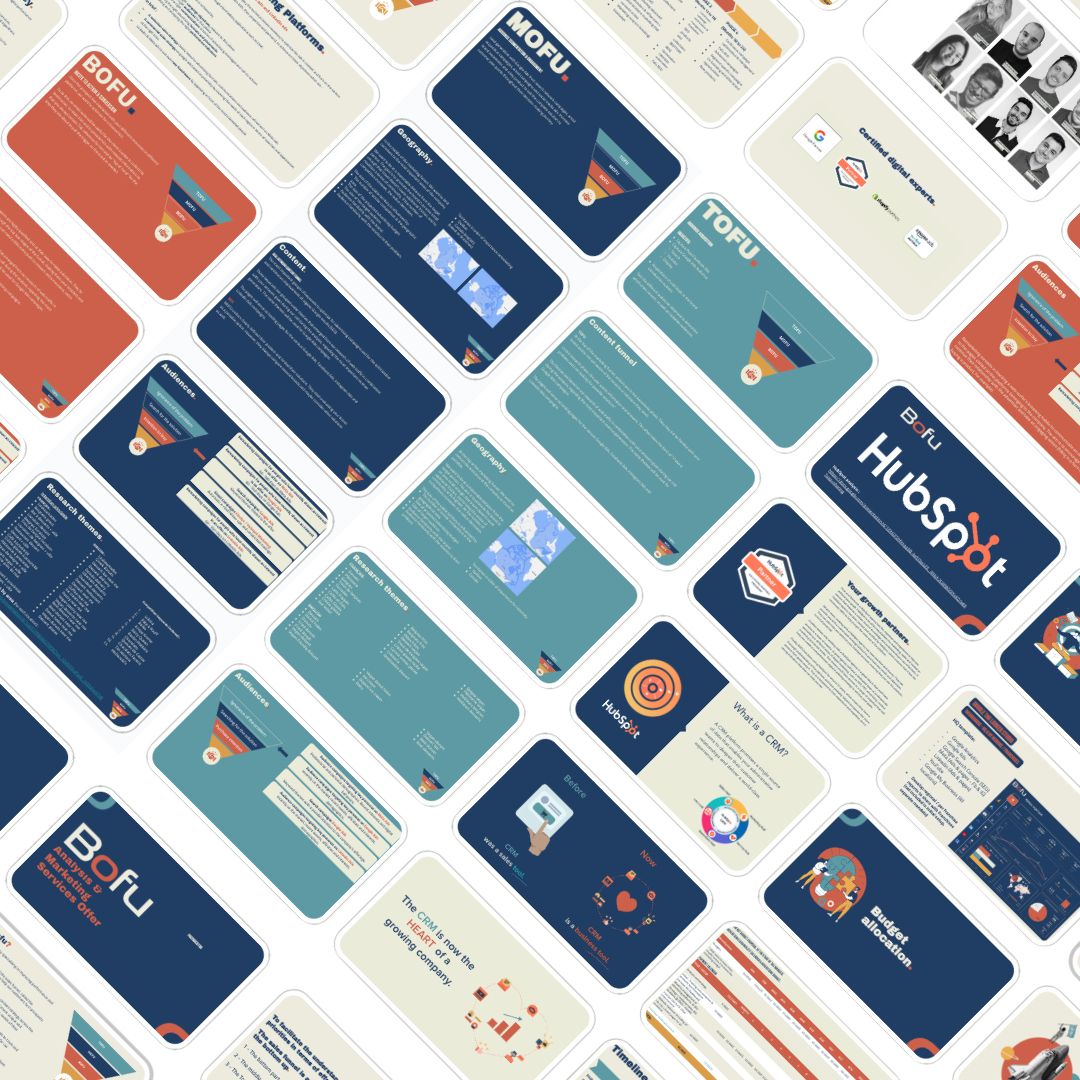Adapted from the master's thesis of Xavier Champoux , with modifications by Bofu.
In digital marketing, it is crucial for businesses to understand how different channels interact to drive conversions. Carryover , spillover , and interaction effects are essential concepts for optimizing cross-channel attribution and evaluating the effectiveness of advertising campaigns.
Here is a detailed explanation of these concepts, answering the most frequently asked questions on the subject.
What is the carryover effect in marketing?
The carryover effect occurs when a user returns to a website using the same channel they originally used to access the site. For example, a customer who discovers a business through a Facebook ad and uses that same channel on their next visit contributes to the carryover effect.
This effect is important because it shows a certain loyalty or familiarity with the channel in question. Marketers can leverage this effect to adapt their strategies by strengthening campaigns on high-performing channels and optimizing the user experience.
The carryover effect and its impact on the acquisition cost
The carryover effect occurs when a user returns to a site using the same channel as the first visit. From a cost of acquisition perspective, this can lead to a misinterpretation of data from certain advertising platforms.
Example :
Let's say a user clicked on a Facebook ad to explore a site, and then returned to that site via Facebook on a subsequent visit to make a purchase. In this case, the advertising platform (Facebook) can attribute all the credit of conversion to this channel, which could lead the advertiser to believe that Facebook is performing extremely well.
However, in reality, the user was already interested on the first visit, and Facebook's effort to bring them back may not have contributed as much to the purchase decision as one might think. The actual acquisition cost could therefore be overrated if we rely solely on Facebook data, without taking into account other channels that may have influenced the conversion.
What is the spillover effect in marketing?
The spillover effect occurs when a user returns to a site using a different channel than the initial visit. For example, a customer may have discovered a business through a Google ad, but on their next visit, they go directly to the site through an organic link or a URL typed directly into their browser.
This effect shows the influence of multiple channels in the purchasing journey. It is particularly useful for assessing the impact of omnichannel strategies, where each channel contributes in turn to the final conversion, even if it was not the last point of contact.
The spillover effect and the distribution of acquisition costs
The spillover effect occurs when a user returns to a site through a different channel than the one used during their first visit. This further complicates the attribution of credit to different advertising channels and can lead to a poor assessment of the acquisition cost if the data is analyzed independently on each platform.
Example :
A user discovers a business through an ad on Google Ads, but later returns to the site through an organic search or direct URL to make a purchase. Google Ads may then not receive the credit total for this conversion, while he played a decisive role in the initial discovery of the company.
If we look only at the data from the organic search platform, we might think that this user was acquired for free, when in reality, Google Ads generated the first touchpoint . This distorts the calculation of the acquisition cost overall, because advertising efforts on Google Ads are not fully taken into account in the final conversion analysis.
What is the difference between carryover and spillover effects?
Although carryover and spillover effects are distinguished by the channel used during repeat visits, they share similar characteristics. Both effects reveal a user’s recurring interest in a website or brand. The key difference is that carryover implies an unchanged channel, while spillover indicates a channel change.
Both effects are useful for understanding how consumers navigate across channels before converting, which can guide marketing decisions to maximize the performance of each channel.
How do interaction effects work in marketing?
Interaction effects in marketing measure the combined impact of multiple independent variables on a dependent variable, such as conversion. This means that multiple ad campaigns or channels can simultaneously influence the same user and, by extension, their purchasing behavior.
Marketers often use artificial intelligence (AI) and machine learning techniques to model these complex effects. For example, a Facebook campaign and a newsletter can work together to convince a customer to make a purchase. These interactions are difficult to measure without advanced tools, but they are essential to understanding the true effectiveness of a multi-channel marketing strategy.
The interaction effect and the complexity of multi-channel acquisition cost
The interaction effect occurs when multiple marketing channels (such as a combination of Facebook ads, newsletters, and Google search) simultaneously influence a user before they make a purchase decision. This means that each channel contributed differently to the conversion, making the assessment of acquisition costs more complex.
Example :
A user sees an ad on Facebook, signs up for a newsletter, then clicks on a Google ad, and then makes a purchase after typing the URL directly into their browser. Each advertising channel played a role, but each platform will claim a share of the conversion .
Due to this effect, it becomes difficult to determine which channel truly influenced the purchasing decision and to what extent. Without a comprehensive view and sophisticated attribution measurement tools (such as multi-touch attribution models), one could wrongly attribute 100% of the acquisition cost to the last interaction (like Google Ads), which underestimates the impact of advertising efforts on other channels.
Why is it important to understand these effects in digital marketing?
Understanding carryover, spillover, and interaction effects helps companies optimize their cross-channel attribution strategy. This helps more accurately attribute the value of conversions to different touchpoints in the customer journey. Rather than focusing solely on the last channel used before conversion, these effects provide a more holistic view of campaign performance.
Using these insights, brands can better allocate their advertising budgets, adapt their strategies across high-performing channels, and improve the customer experience throughout the purchasing journey.
How can companies take advantage of these effects?
To take full advantage of carryover, spillover and interaction effects, companies should:
• Use advanced attribution tools that track cross-channel interactions.
• Analyze campaign data to identify high-performing channels , whether carryover or spillover channels.
• Optimize omnichannel strategies by ensuring every touchpoint—whether it’s an ad, newsletter, or organic search—works in harmony to maximize conversions.
• Integrate AI and machine learning models to measure interaction effects and better understand how different variables influence outcomes.
Carryover, spillover, and interaction effects have a direct and often underestimated impact on the true cost of acquiring a customer when analyzing platform-by-platform data. Here’s a detailed explanation of how these phenomena influence acquisition costs in digital marketing.
How do these effects distort the calculation of the real acquisition cost?
• Overemphasis on final channel : In single-touch attribution models (e.g., last-click attribution), the last channel used before conversion gets all the credit, which distorts the cost allocation if other channels influenced the purchase decision.
• Undervaluing initial efforts : Discovery channels (like video advertising or display banners) are often undervalued because they don’t immediately drive direct conversions, but play an important role in decision making.
• Complexity of omnichannel journeys : With the interaction effect , it becomes essential to recognize that each channel has a specific role to play at different points in the customer journey. Failing to take this complexity into account leads to sub-optimization of advertising budgets.
How to optimize the acquisition cost calculation with these effects in mind?
To get a more accurate estimate of the true acquisition cost , it is essential to adopt advanced attribution models , such as multi-touch attribution models, which take into account the cumulative impact of channels. These models allow you to:
• Redistribute credit fairly between channels that contributed to the customer journey.
• Evaluate the effectiveness of each channel without limiting yourself to the first or last interaction.
• Optimize ad spend by considering carryover, spillover and interaction effects, and investing in the channels that deliver the most value throughout the customer journey.
By understanding these dynamics, businesses can better allocate their budgets and maximize the effectiveness of their campaigns, thereby reducing their overall cost of acquisition .
Conclusion
In conclusion, mastering these effects allows a better understanding of customer journeys and a more efficient use of marketing resources, leading to more profitable and better targeted strategies.













